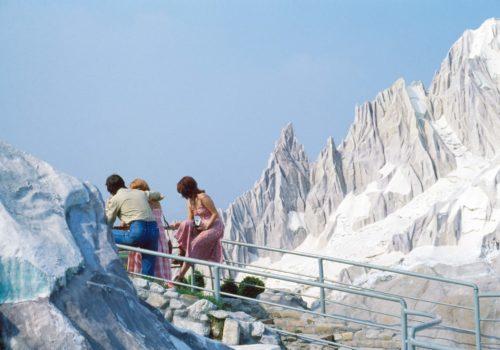Launched this year, the Swiss Photomonth is a large-scale initiative aimed at highlighting the richness of the Swiss photography scene.
Organized by Spectrum – Photography in Switzerland, the Swiss Photography Month, running from late August to early October, brings together nearly sixty cultural venues across the country. Noting that many photographic events are held at the end of summer, the initiative aims to increase visibility and attendance for these venues and events on a national scale.
With programming that ranges from internationally renowned institutions to emerging spaces, Swiss Photomonth allows the public to discover major figures in Swiss and international photography while also providing visibility to young talents in the contemporary art scene.
Although this first edition is drawing to a close, several major exhibitions remain available to explore, some even extending until January 2025.
Among the must-see events, the exhibition “Małgorzata Stankiewicz,” currently on display at the Fondation Louis Moret in Martigny (canton of Valais), poignantly addresses environmental issues, particularly the destruction of the Białowieża Forest, one of Europe’s last primeval forests. With her series Cry of an Echo, the Swiss artist of Polish origin uses experimental photographic techniques to highlight the fragility of natural landscapes in the face of human exploitation. Małgorzata Stankiewicz combines analogue processes, such as the use of silver film, and explores alternative printing methods, incorporating chemical manipulations that incisively evoke the progressive degradation of ecosystems. Her photographs, oscillating between abstraction and reality, convey a visual poetry that questions our relationship with nature and the effects of human intervention. The exhibition runs until November 3, 2024.
At Galerie Focale in Nyon, Elsa Beaumont’s series Maison de Dieu, on display until November 10, 2024, immerses visitors in the liminal world of a community nestled in the Cévennes. For nearly forty years, this space has welcomed people from all backgrounds seeking refuge and respite. Founded on principles of unconditional hospitality, non-judgment, and solidarity, it shelters around eighty residents who share a common daily life despite hardships. Elsa Beaumont’s photographs, influenced by her own move to the Cévennes a decade ago, sensitively capture the intimacy of these lives, marked by wounds and unconventional paths. Through a poetic and documentary approach, she delves into the depths of these lives in limbo, where the untamed, ever-present surrounding nature subtly dialogues with bodies and minds. Maison de Dieu reveals a humanity that is both fragile and resilient, inviting reflection on the tensions and hopes that traverse this community and our society.
At the Centre de la Photographie Genève (CPG), the exhibition Palonegro by Colombian artist Luis Carlos Tovar, running until December 8, 2024, explores a lesser-known chapter of Colombian history: the Thousand Days’ War (1899-1902), and more specifically, the deadly Battle of Palonegro (May 11-25, 1900). The result of years of research between Colombia and Switzerland, this project brings together little-known archives from various sources, including the Red Cross, the Geneva Library, and declassified military records from Colombia’s Ministry of War. By referring to these photographic archives as “bodies to be healed,” Luis Carlos Tovar offers a new reading of these images, placing them within a process of healing individual and collective memories. Retracing this tragic period of Colombian history, the artist questions how historical traumas can be revisited and, potentially, repaired. Palonegro goes beyond mere documentation, becoming a space for reflection on historical violence and the reconciliation of a country scarred by decades of conflict.
Also in Geneva, the Grand Tour exhibition at the Geneva Library, running until January 25, 2025, traces the beginnings of modern tourism in the Alps, a phenomenon that, from its inception, began shaping and commercializing the perception of these spectacular landscapes. Historical photographs reveal varied scenes: monuments, cities, and moments when early tourists ventured into the Alpine mountains and glaciers. This Grand Tour bears witness to the evolving interactions between culture and nature, prompting reflection on how the nascent tourism industry permanently transformed our view of these environments once perceived as wild.
Finally, MASI Lugano is hosting a retrospective on Luigi Ghirri with the exhibition Viaggi: Photographies 1970-1991, running until January 26, 2025. The museum pays tribute to the Italian photographer, thirty years after his untimely death. Considered one of the great figures of European photography in the 20th century, Ghirri revolutionized the use of color at a time when it was still largely reserved for commercial use. The exhibition focuses on his wanderings through ordinary landscapes, whether real or imaginary. It presents around 140 color photographs, including numerous vintage prints from the collections of Ghirri’s heirs and the CSAC in Parma.
Supported by an ambitious first program, Swiss Photomonth has already established itself as a major event on the Swiss cultural calendar. The second edition is expected at the end of August 2025.
More information
















